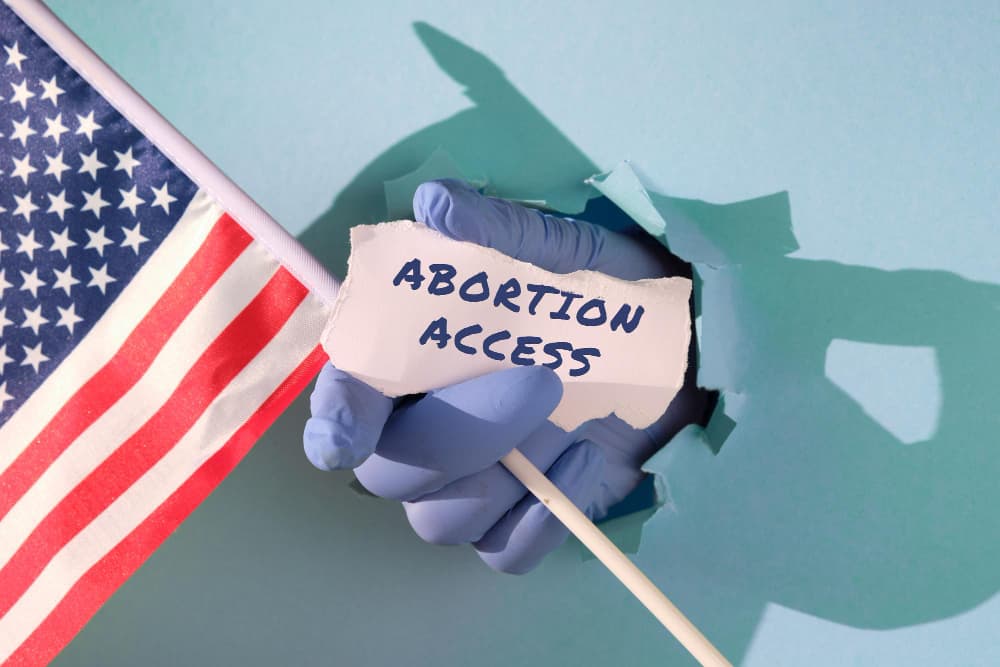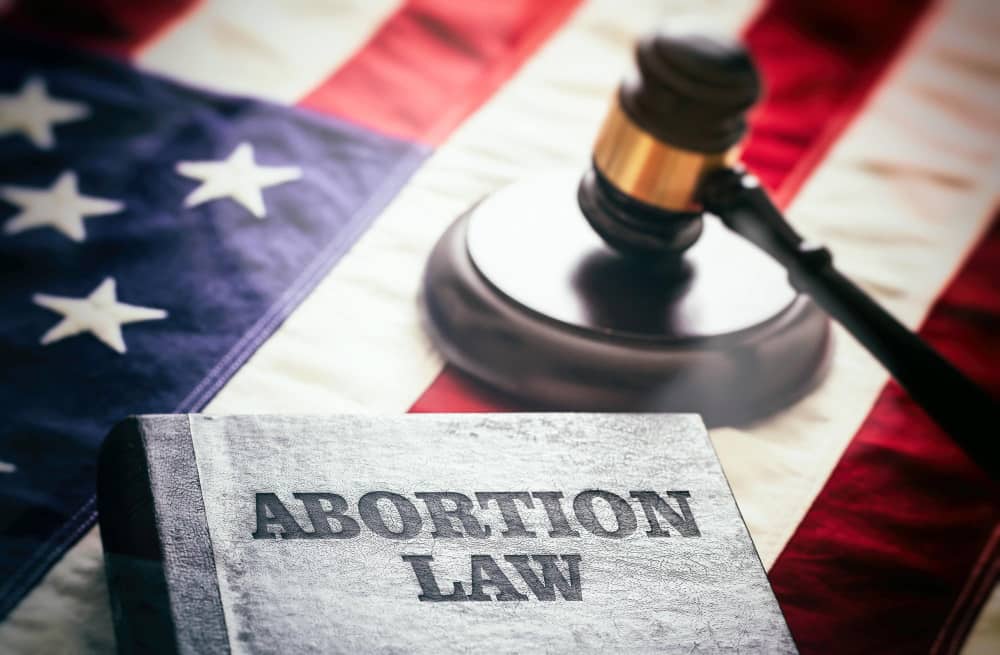Abortion in the US and its History
Since European colonization of the Americas, abortion has thrived in North America; it was a reasonably frequent procedure that wasn’t always forbidden or debatable. Early in the 19th century, instructions for performing an abortion were published. By the common law, abortion was lawful and only prohibited after quickening, which is the beginning of fetal movements, often felt 14–26 weeks after conception and between the fourth and sixth months.
Quickening is defined as the onset of fetal movements. The pregnant woman generally made the decision, but written statutes didn’t explicitly express or make clear the requirements. As a result, most American states kept using English common law to regulate abortion after the country gained its independence.
According to legal expert Sheldon Gelman, the Magna Carta (1215), introduced into the US Constitution from English law, is where the right to bodily integrity, including the right to an abortion, can be found. Life “begins in contemplation of law as soon as a newborn can stir in the mother’s womb,” according to William Blackstone’s Commentaries on the Laws of England (1765). James Wilson concurred with this viewpoint. Legal sanctions, according to Blackstone, only apply “where a woman is quick with child, and by a potion, or otherwise, kills it in her womb.”
Criminalization of LGBTIQ community in Sri Lanka – Legamart
Statistics on Abortion in the US

As of 2018, there were 11.3 abortions per 1,000 women of reproductive age (15–44), down from a peak of 30 in 1980. In addition, 92% of abortions in 2018 were carried out at 13 weeks fewer gestation, while 78% of abortions were carried out at 9 weeks or fewer. By the time women attain 45 years of age, about 25% of women have had abortions, with 20% of people in their 30s. In addition, 60% of women who had abortions in 2019 have already been moms, and 50% had two or more kids. Statistics show that lower abortion rates are associated with greater access to birth contraception.
Abortion in the US – Access and Restrictions
Abortion Access
Laws prohibit actions such as physically blocking clinics, threatening medical staff or patients, trespassing, and calling the clinic to harass it and regulations that designate a safe area around the clinic.
Abortion Provider Requirements
State governments and licensing agencies constrain the scope of practice for medical practitioners. State laws frequently do not define whether medical procedures are within or outside a practitioner’s scope of practice. Nevertheless, many states have viewed abortion differently by only allowing doctors to perform abortions. Other states have taken proactive measures to broaden the types of clinicians who could lawfully offer abortion care by attempting to repeal physician-only laws or explicitly allowing physician assistants, certified nurse midwives, nurse practitioners, and other qualified medical professionals to provide abortion care through legislation, regulations, or attorney general opinions.
Abortion Restrictions
Regulation on Abortion Providers
Abortions are regulated via targeted regulation of abortion providers (TRAP), Doctors who provide abortion care must adhere to specific regulatory constraints that are distinct from and more onerous than those imposed on doctors who provide similar types of therapy. These regulations do not increase patient safety and go against advice from evidence-based medicine.
TRAP laws can be divided into several categories, such as those governing the places where abortions are performed and limits on reporting, provider certifications, and facility rules. The cost of compliance is typically high and may need unsightly facility modifications.
Parental Engagement
Laws require clinics or providers to tell parents or legal guardians of minors seeking abortion in the US. To document the consent of parents or legal guardians to the minor’s abortion before the procedure (parental notification) or to do so (parental consent).To know more about this, contact our experienced lawyers at Legamart.
Laws requiring consent
Laws mandate biased and frequently erroneous counselling or ultrasounds before pregnant women obtain abortion treatment. In some instances, mandate a waiting period between the counselling and/or ultrasound and the abortion care. These regulations prevent pregnant persons from exercising their bodily autonomy rather than serving any medical purpose.
Illegality:
After Roe v. Wade, the Supreme Court changed the view of abortion in the United States; presently, states that expressly outlaw abortion and carry out their bans by criminal penalties are referred to as “Illegal.”
Case Laws

Beyond abortion, what else did Roe v. Wade defend?
Since Roe, the Supreme Court has consistently emphasized that the Constitution protects abortion as a fundamental liberty connected to other liberty rights to make independent choices about one’s family, relationships, and bodily autonomy. It’s critical to comprehend all of the rights that Roe v. Wade upheld before its recent overturn.
Reproductive rights are in jeopardy as the Supreme Court issued its decision in Dobbs v. Jackson Women’s Health, overturning Roe v. Wade decision.
On June 24, 2022, the Supreme Court overturned Roe v. Wade, a decision that had preserved the US Constitution’s ban on abortion for nearly 50 years. The Supreme Court ruled that states have the right to restrict or outright outlaw abortion. Probably, over half of the states will either implement new laws that are as harsh as they can be or maintain the status quo of unconstitutional abortion restrictions. States are divided into abortion havens, where access to care is still readily available, and abortion deserts, which are unlawful.
Several million people, mainly in the South and Midwest, who live in “abortion deserts” must travel to seek legal care; as a result, many people are unable to access abortion for a variety of practical and financial reasons. Therefore, it is crucial that “Protected” states pass laws and policies that transition them into “Expanded Access” and that “Not Protected” states establish a right to abortion.
Should Abortion be Illegal in the US?
People all across the world have long been split on the issue of whether or not abortion should be legal. The pro-choice and pro-life movements are divided into two camps, and they frequently battle in demonstrations.
Abortion laws, according to proponents of legalized abortion, put pregnant women who aren’t seeking abortions in danger and violate their right to bodily autonomy, which has far-reaching effects.
As life starts at conception, opponents of legal abortion contend that it is murder. Additionally, they assert that access to contraception, health insurance, and sexual education will remove the necessity for abortion and that legal abortion promotes a culture of disposability.
Most American adults still believe that abortion should be permitted in all or most situations. Six out of ten Americans (61%) believe abortion should be permitted in “all” or “most” cases, while 37% believe the opposite. Over the previous few years, little has changed regarding these opinions: As an illustration, in 2019, 61% of adults believed that abortion should be legal in most or all situations, while 38% believed the opposite.
Cons on Abortion

Given that life begins at conception, abortion is murder.
Conception is the beginning of the process of cell division that results in the development of a human at the time a sperm cell fertilizes an egg cell. Even if life is only a few developing cells at the time of death, ending it is still considered murder ethically and legally.
Legal abortion supports a culture that values human life as a commodity.
Abortion produces a society in which human life in its most vulnerable state is seen as disposable and fails to appreciate human life’s sanctity. Such a concept emphasizes the need for a quick fix to a challenging issue for low-income women.
Abortion would not be necessary if more people had access to contraception, health insurance, and sexual education.
Since 1981, abortion rates in the US have decreased at what the CDC described as a “slow yet steady pace.” For example, per 1,000 women aged 15 to 44, there were 29.3 abortions that year. In 2019, there were 11.4 abortions per 1,000 women.
Experts credit the drop in teen birth control use, which hasn’t grown considerably due to improved sex education. According to a 2021 study, pupils who participated in comprehensive sexual education started having sexual relations later than those who did not. There are fewer abortions as a result of youths having sex later in life since there is less likely that they may accidentally get pregnant.
In the past, abortion was a standard method of birth control and family planning since there were few reliable methods, little access to information and other facilities, and childbirth was extremely risky. There are now better options, such as more reliable birth control, improved healthcare and insurance, and sex education to prevent unwanted pregnancies.
Conclusion
Regarding when abortion should typically be permitted and when abortion in the US should be illegal, Americans have nuanced opinions. Overall, a majority of persons (56%) believe that the length of a woman’s pregnancy should be considered when deciding when abortion should be permitted, while a much smaller percentage (14%) disagrees. A further 25% of the population believes that abortion should always be legal (19%) or illegal (8%) regardless of the situation; these respondents were not asked this question.
The prevailing opinion on abortion should be illegal in the US is that the pregnancy stage should be considered when deciding whether abortion should be permitted among men and women, Republicans and Democrats, Christians and religious “nones,” on both sides of the argument.




